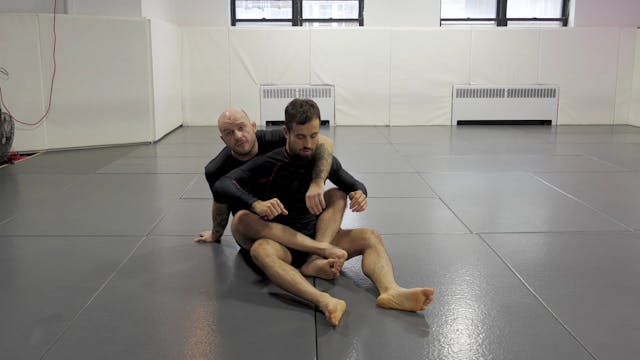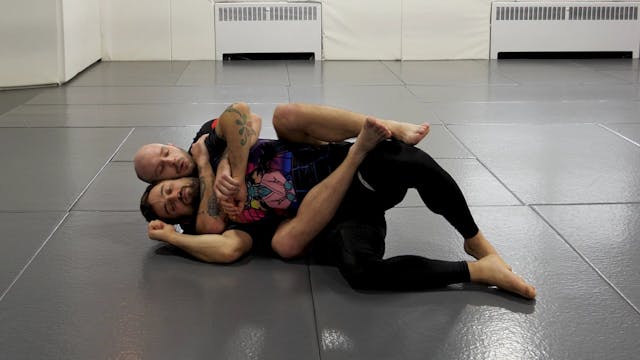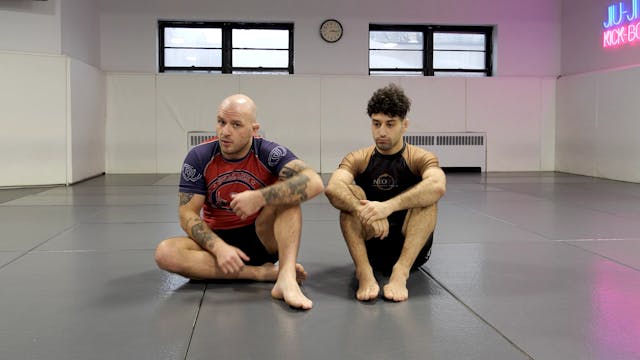Principles of Back Control
NoGi BJJ: Intro to back attacks by Corey Guitard
•
6m 37s
The three preliminary principles of back control are: having your chest connected to your opponent’s back, having your hips above your opponent’s hips, and having your head and your choking arm on opposite sides of your opponent’s head.
The secondary set of principles of back control are: having your elbows deep and tight (seatbelt vs double-under control) and having active leg hooks (regular hooks, modified hooks, or body triangle).
Up Next in NoGi BJJ: Intro to back attacks by Corey Guitard
-
Strong and Weak Sides Explained
There are situations where, if your opponent is defending correctly, you may want to voluntarily switch from back control on the strong side to the weak side. For you to make this transition, you’ll have to move your underhook to the other side, change your head positioning, and hip-escape to ens...
-
Switching from Strong Side to Weak Side
There are situations where, if your opponent is defending correctly, you may want to voluntarily switch from back control on the strong side to the weak side. For you to make this transition, you’ll have to move your underhook to the other side, change your head positioning, and hip-escape to ens...
-
Grip Hierarchies from Back Control
The grips you choose, once you have the back, will determine the level of control you maintain and the types of attacks you can employ. The seatbelt grip offers you the best combination of control and offensive ability. More specifically, cross-grips should be at the top of your grip hierarchy.



